To add a beautiful and fragrant flower to your garden, you should consider planting Rhododendrons. These stunning flowers are available in pink, purple, white, and red and have a sweet fragrance that is sure to please. There are many different Rhododendron species, each with its unique set of characteristics. However, there are some general characteristics that all Rhododendrons share. For example, all Rhododendrons need full sunlight or partial shade and well-drained soil.
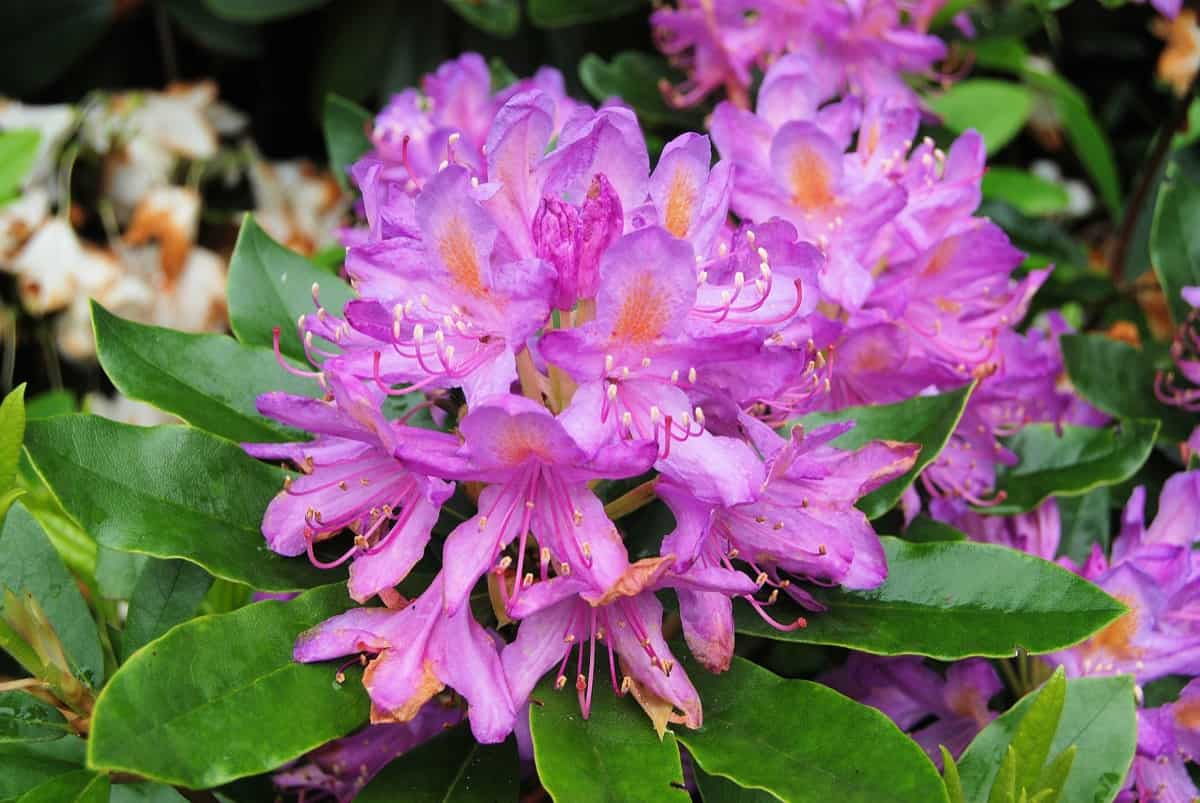
Rhododendrons also need to be watered regularly, especially during the summer when they are actively growing. If you’re thinking about planting Rhododendrons in your garden, choosing a suitable variety for your climate and growing conditions are essential. Some varieties of Rhododendrons are more tolerant of cold weather than others, so research before purchasing. With proper care and attention, Rhododendrons can be a beautiful and low-maintenance addition to any landscape.
How to grow and care for Rhododendrons
Types of Rhododendrons
- Elviira – Rhododendron Elviira is a cultivar of the Rhododendron genus known for its large, bright pink flowers. The plant has large, leathery leaves that are dark green and covered with small hairs. The flowers of Elviira are borne on tall stems and can reach up to 10 centimeters in diameter. Rhododendron Elviira is best suited to growing in full sun or partial shade in well-drained, acidic soil.
- Blue Peter –The leaves are elliptical to oblong-shaped and dark green with a purple hue on the undersides. The flowers are deep blue or violet-blue, borne in clusters of 3 to 5 blooms. Flowering typically occurs from mid to late spring.
- Boule de Neige – Boule de Neige is a beautiful variety of Rhododendrons characterized by its large, white flowers. The Rhododendron Boule de Neige is famous for gardens and landscaping due to its showy flowers and ability to thrive in cooler climates.
- Bow Bells – Rhododendron Bow Bells is a hardy, evergreen shrub that produces an abundance of beautiful, bell-shaped flowers in shades of pink and purple.
- Windsong – Rhododendron Windsong is a compact, deciduous shrub perfect for small spaces. It has dark green leaves that turn burgundy in the fall, and its branches are covered in clusters of white flowers in early summer.
- White Angel – White Angel is a beautiful white rhododendron that blooms in early spring. The flowers are large and fragrant, and the plant has glossy green leaves. This Rhododendron is an excellent choice for a border or foundation planting.
- Nova Zembla – The leaves are dark green and glossy, with a leathery texture. The white, pink, or purple flowers bloom in late spring or early summer.
Climate suitable for growing Rhododendrons
Rhododendrons prefer a cool, moist climate with plenty of rainfall or irrigation. They will not tolerate long periods of drought. They should be planted in shady areas in warm climates to protect them from the hot sun. Rhododendrons are hardy plants that tolerate colder climates but prefer temperate to mild climates.
In case you missed it: How to Choose the Suitable Container for Your Houseplants: Key Rules and Ideas
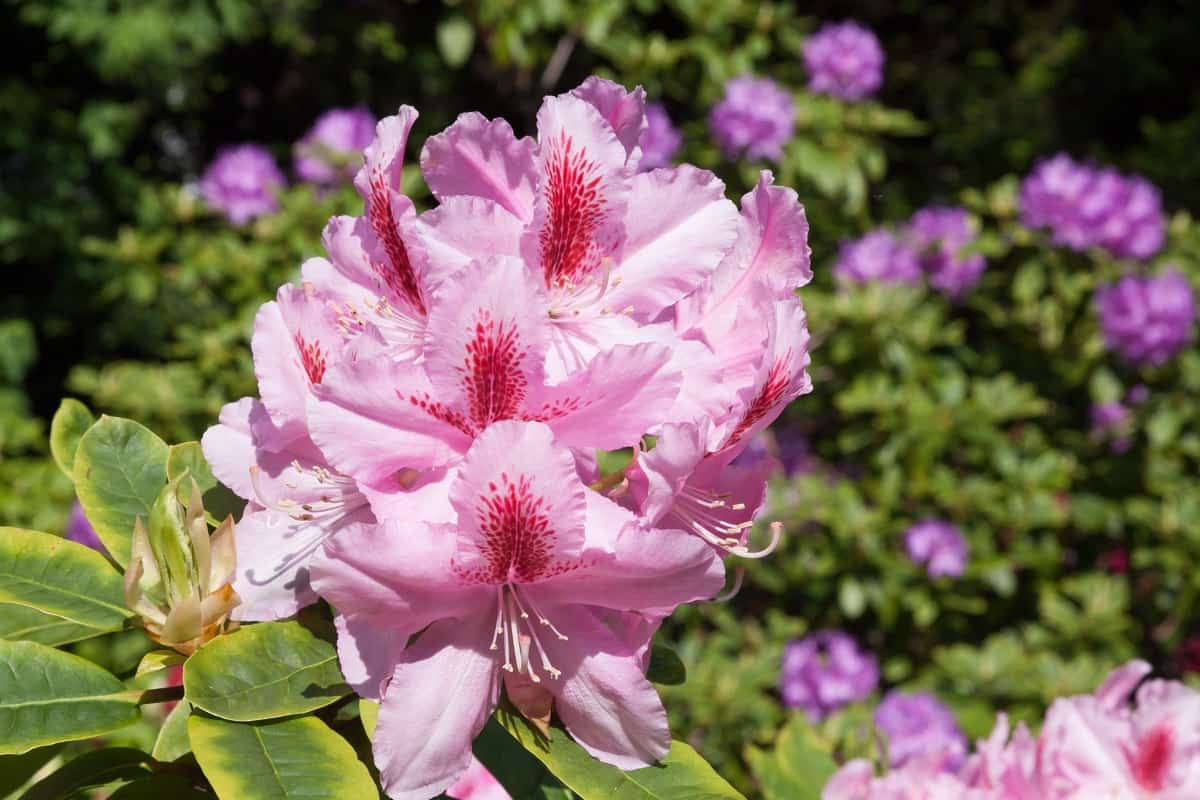
They will grow and bloom best in areas with moist, well-drained soils and some shade. If you live in hot summers, choose a spot for your Rhododendron that gets some afternoon shade. Rhododendrons need at least 4 hours of sunlight each day to grow properly. If you live in an area with prolonged periods of cloudy weather, you may need to supplement your Rhododendron’s sun exposure with artificial light.
Soil requirement for growing Rhododendrons
Rhododendrons are famous for gardens and landscaping due to their large, showy flowers. Rhododendrons prefer acidic soils with a pH of 4.5 to 5.5. If your soil is not naturally acidic, you can lower the pH by adding sulfur or aluminum sulfate. The ideal soil for Rhododendrons is loose and well-drained, so if your soil is heavy or clay-like, you will add some organic matter, such as peat moss or compost.
Rhododendrons also like their roots to stay cool, so planting them in a shady spot will help ensure that the soil doesn’t dry out too quickly. When planting Rhododendrons, make sure to dig a hole that is twice as wide as the root ball. Backfill the hole with the amended soil, gently packing it around the roots. After planting, water the plant well immediately and regularly during its first growing season.
Water requirement for growing Rhododendrons
Rhododendrons require moist, well-drained soil and regular watering to thrive. Rhododendrons are drought-tolerant once they are established, but they will not tolerate extended periods of dryness. Rhododendrons require a lot of water, especially when they are first planted. They should be watered deeply and regularly, especially during the summer months.
If the plant leaves start to turn yellow or brown, this is a sign that it is not getting enough water. You should water Rhododendrons deeply, allowing the soil to dry out between waterings. They should be watered more frequently during hot, dry weather. Mulching around the plants will help to retain moisture in the soil.
In case you missed it: 13 Popular Houseplants with White Flowers: You Should Add to Your Home
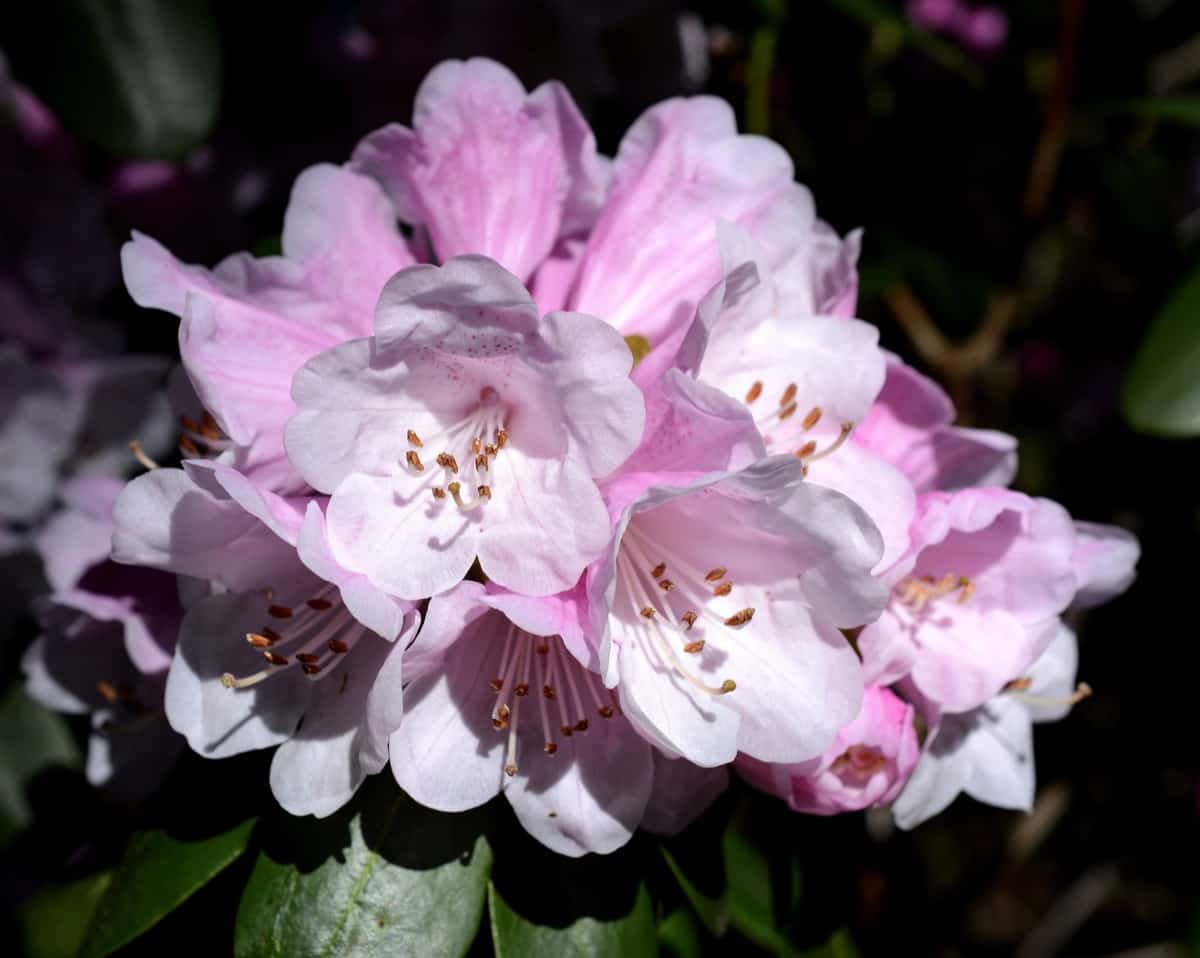
Rhododendron propagation
From seed
Rhododendrons are popular plants that can add beauty and color to any garden. While they are often considered difficult to grow, Rhododendrons can thrive in various environments with proper care and attention. Growing Rhododendrons from seed are the most challenging way to propagate these plants, but it is also the most rewarding. Collecting fresh seed from a healthy rhododendron bush is the best way to ensure successful germination.
Once collected, the seeds should be sown on perlite or vermiculite. The seedlings should then be covered with a clear plastic dome or wrap to maintain high humidity levels and prevent drying out. Rhododendron seeds require warm temperatures to germinate, so a heat mat placed under the planting tray will help create an ideal environment.
From cuttings
Propagation is the process of creating new Rhododendrons from existing ones. Taking stem cuttings is the most common method of propagation. Choose a healthy stem about 6 inches long to take a stem cutting. Cut the stem below a leaf node. Dip the end of the cutting in the rooting hormone. Plant the cutting in a moistened perlite or vermiculite. Place the pot in a bright spot from direct sunlight, and keep the soil moist. The cutting should root within 4-8 weeks.
Choose a healthy plant with well-established roots to propagate Rhododendrons from root cuttings. Cut 3-5 inch pieces from the tips of the roots, and replant them immediately in pots filled with moistened perlite or vermiculite. Keep the soil moist, and place the pots in a bright spot out of direct sunlight. The roots should develop within 4-8 weeks.
Transplanting Rhododendrons seedlings
When transplanting Rhododendrons, choosing a location with well-drained soil and in partial sun to partial shade is essential. It is best to transplant Rhododendrons in the spring or fall. To prepare the transplanted area, dig a hole and add some compost to the hole. Place the plant in the prepared hole and backfill it with soil. Firmly press down on the soil around the plant to secure it in place. Water thoroughly after transplanting.
In case you missed it: 25 Flowers for Container Gardening: Top Best List and Easy for Beginners
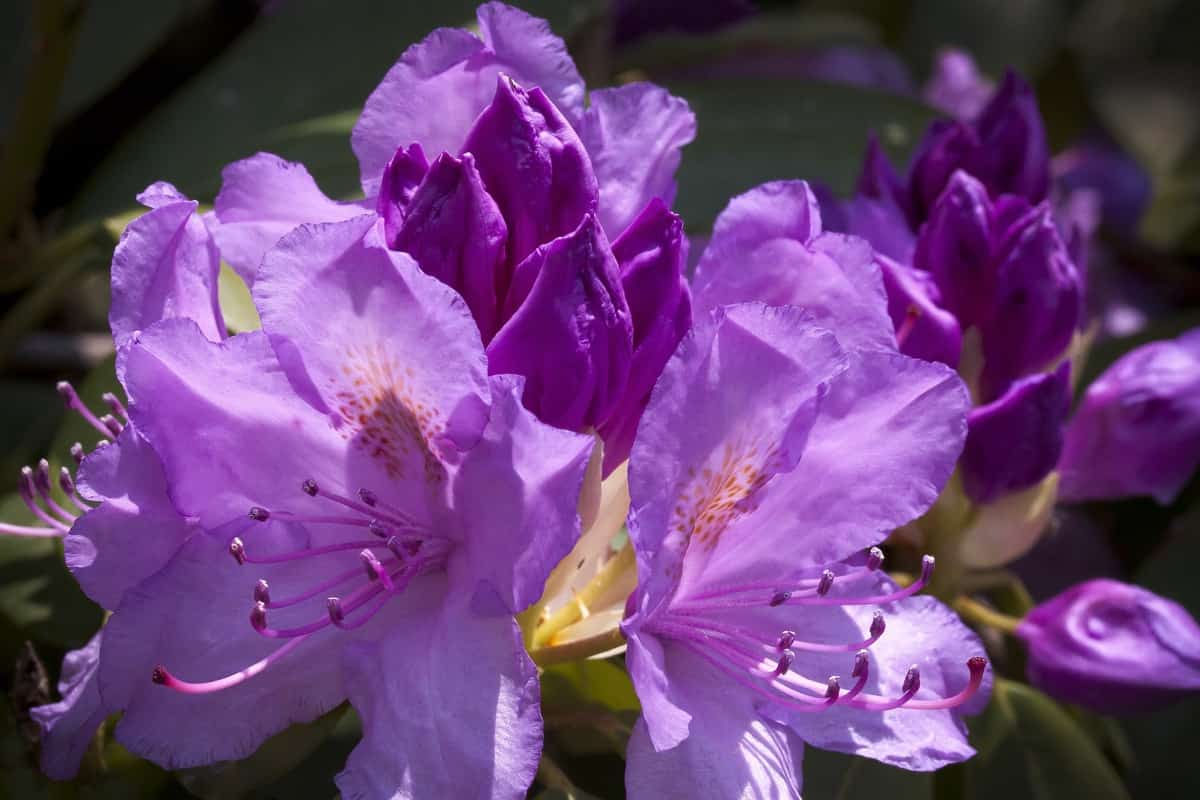
Rhododendrons care
Fertilizer requirement for growing Rhododendrons
Rhododendrons are lovely, long-lived shrubs that come in various colors and sizes. They are relatively easy to grow, but you should know a few things about fertilizer requirements for Rhododendrons. Rhododendrons also need plenty of organic matter in the soil to help retain moisture and nutrients. Rhododendrons are a beautiful addition to any landscape, and with the proper care, they can thrive for many years.
Rhododendrons prefer slightly acidic soil, so it is essential to use a fertilizer designed for acid-loving plants. You can use a fertilizer with an N-P-K ratio of 10-10-10. This will ensure that your Rhododendron gets the nutrients it needs without causing any harm to the plant. When applying fertilizer, be sure to follow the directions on the package carefully. Over-fertilizing can be just as harmful as not fertilizing at all.
Apply fertilizer in early spring and again in mid-summer, taking care not to get any on the plant leaves. With proper care and attention, your Rhododendrons will thrive and provide you with years of enjoyment. Regarding fertilizer, Rhododendrons need a slow-release fertilizer that is high in phosphorus and low in nitrogen. The best time to fertilize Rhododendrons is in early spring, just as new growth begins to appear.
Pruning Rhododendrons
When pruning Rhododendrons first, you should only prune them after they bloom. Secondly, you should always use sharp, clean pruning shears when trimming back the plant. And finally, be sure to remove any dead or diseased branches from the plant. When trimming the plant, you’ll want to ensure that you’re cutting just above a leaf bud.
This will encourage new growth in the plant. You should also aim to prune the plant to have a nice, even shape. If any branches cross over or rub against one another, you’ll want to remove those as well. By doing this, you’ll help promote air circulation within the plant, which will help it stay healthy and strong.
Deadheading Rhododendrons
The best time to deadhead Rhododendrons is in late summer. Cut off the spent flower heads, and then cut back the stem to a set of healthy leaves. Rhododendrons will often re-bloom if they are correctly deadheaded. You can do this by cutting or pinching the stem below the flower head. After deadheading, give your Rhododendron a light pruning if needed.
In case you missed it: Top 10 All Year Flowering Plants
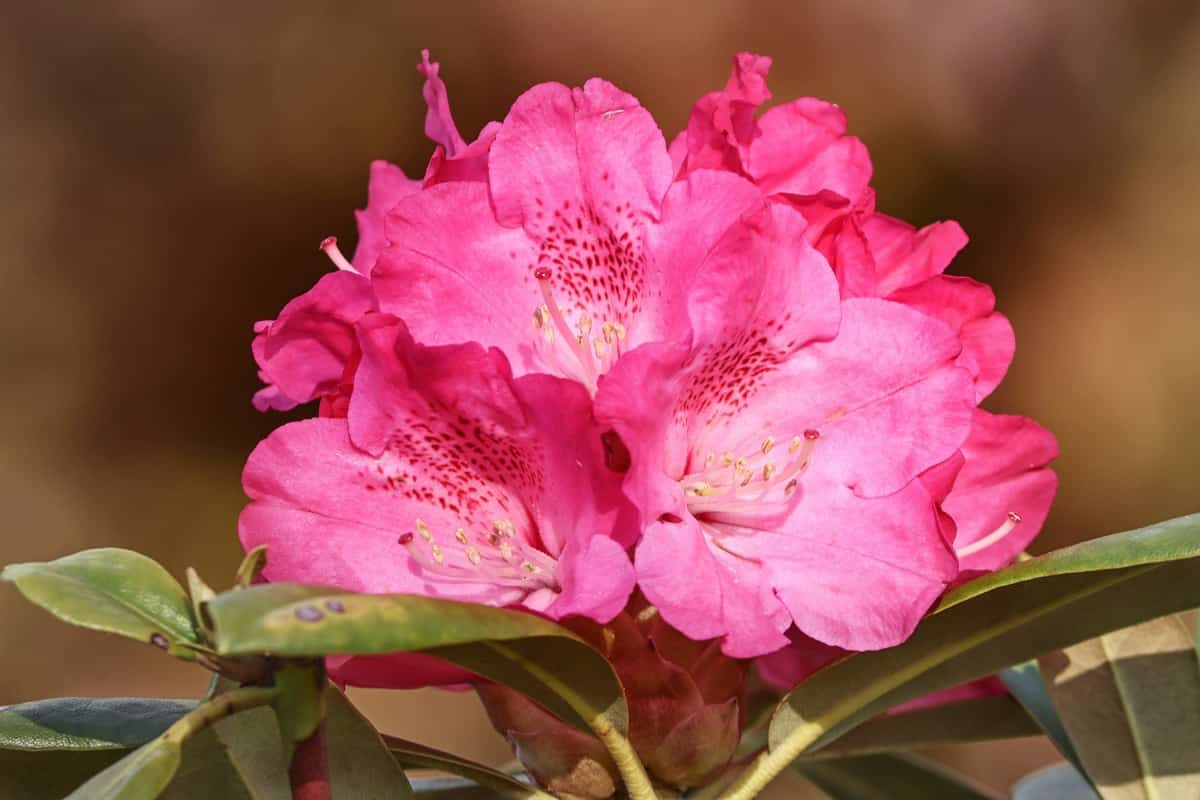
Rhododendrons care in winter
Rhododendrons are the most popular flowering shrub and one of the easiest to care for. Rhododendrons are so easy that many gardeners consider them virtually maintenance-free. First, it’s essential to protect your Rhododendrons from the cold. If you live below freezing, you’ll need to ensure that your plants don’t suffer frost damage. One way to do this is to cover them with a layer of mulch or straw.
This will insulate the roots and keep them from freezing. Another way to protect your Rhododendrons from the cold is to water them deeply before the first frost hits. Deep watering will help hydrate the roots and prevent them from drying out during winter dormancy. Once the ground freezes, you won’t be able to water your plants, so make sure they’re well-hydrated before that happens. Finally, don’t fertilize your Rhododendrons during the winter months.
Pests and diseases of Rhododendrons and their control
Pests and diseases are a fact of life regarding growing Rhododendrons. The good news is that there are effective ways to control them. The most common pests that attack Rhododendrons are aphids, scales, whiteflies, and caterpillars. These pests can severely damage the plants by sucking the sap from the leaves or stems, weakening the plant and making it more susceptible to disease. Aphids can also spread diseases such as powdery mildew.
There are several ways to control pests on Rhododendrons. One is to use an insecticide such as neem oil or horticultural oil. These oils work by suffocating the pests. Another option is to use a biological control such as ladybugs or lacewings, which feed on the pests. Powdery mildew disease appears as a white, powdery growth on the leaves and stems of infected plants. Powdery mildew is more common in humid environments.
Leaf spot is caused by various fungi and bacteria and manifests as small, dark spots on the leaves. Leaf spot can cause the leaves to turn yellow or brown and drop off prematurely. Canker is a bacterial or fungal infection that causes sunken, dead areas on the stems or trunk of the plant. Cankers can girdle and kill branches and, if left unchecked, kill the entire plant. Rust is a fungal disease affecting both the Rhododendrons’ leaves and stems. Leaves may develop orange or red pustules, while stems may have reddish-brown lesions.
In case you missed it: How to Grow Flowers in Winter in India: Planting, and Care
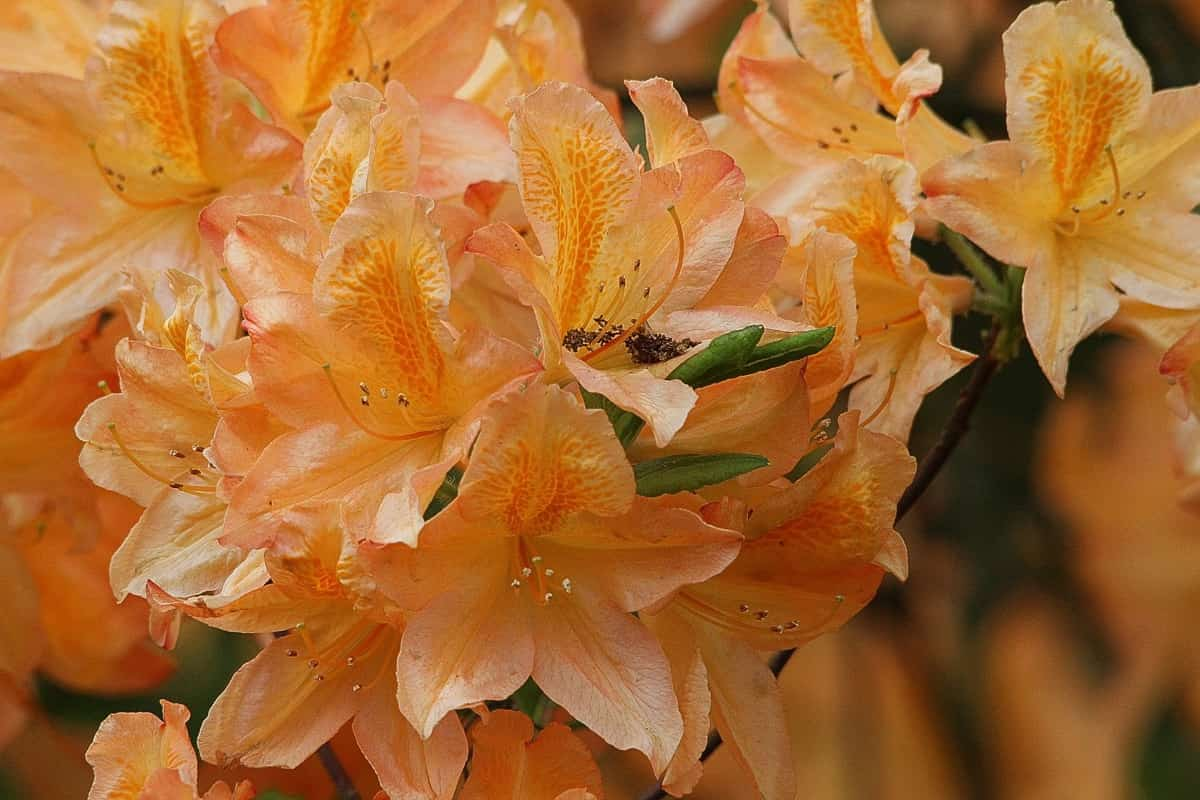
- Spraying with a fungicide– Fungicides can effectively prevent and treat diseases.
- Improving air circulation – This can be done by pruning back branches and leaves or increasing the spacing between plants.
- Avoiding overhead watering – Watering from below is best, as it minimizes the chances of water splashing onto leaves and spreading diseases.
- Rotating crops – If you grow Rhododendrons in the same spot year after year, diseases can build up in the soil. By rotating crops (i.e., growing them in different spots), you can help reduce the chances of disease problems.
Conclusion
Rhododendrons are the most popular flowering shrubs in the world. They are prized for their beautiful flowers and ability to thrive in various climates. Following the tips in this article, you will be on your way to a thriving Rhododendron garden that will envy your neighbors. With a little effort, you can have gorgeous Rhododendrons that will bloom for years.
- How to Grow Hibiscus from Flower
- Plantation Ideas for Home Decoration: A Beginners Guide
- Flower Garden Designs and Layouts for Beginners
- Planting and Spacing Techniques in Papaya: A Beginner’s Guide
- Growing Gold: Essential Techniques for Planting Pineapples
- How to Make Kalanchoe Plant Bushy: Home Remedies and Solutions
- 11 Reasons Why Your Gardenia is Not Blooming: Home Remedies and Solutions
- Eco Elegance: The Guide to Designing a Drought-Tolerant Landscape
- Gardening on a Slope: Strategies for Hillside Landscaping
- Nourish and Flourish: Top Organic Mulches for Thriving House Plants
- Everything You Want to Know about Indian Mogra Flower: Discover Uses and Growing
- Green Thumb Success: Expert Tips for Cultivating Greenhouse Pumpkins All Year Round
- Maximize Growth & Flavor: The Ultimate Guide to Companion Planting in Herb Gardens
- How to Control Rhododendron Problems Naturally: Home Remedies and Organic Ways to Fix Them
- Natural Magic: The Remarkable Benefits of Cinnamon for Plants
- Best Steps to Revive Dying Tulip with Natural and Organic Treatment
- 10 Reasons Why Your Angel Trumpet is Not Blooming: Remedies and Treatment
- How to Fix Periwinkle Leaf and Flower-Related Problems: Natural Remedies and Solutions
- How to Fix Zinnias Leaf and Flower Problems: Discover Natural and Home Remedies
- Organic Steps to Induce Lemon Tree Flowers: A Comprehensive Guide
- Bloom Booster: Crafting the Perfect Homemade Bougainvillea Fertilizer
- Optimizing Growth: A Guide to Applying NPK Fertilizer for Potted Plants
- 10 Best Homemade Fertilizers for Rubber Plant: DIY Recipes and Application Method
- How to Boost Female Pumpkin Flowers: Effective Steps for More Flowers and High Yields
- Transform Your Indoor Garden: Top Benefits of Pink Salt for Houseplants
- 10 Best Homemade Fertilizers for Peacock Plants (Calathea): Easy DIY Guide
- Unlock Blooms: 9 Reasons Why Your Potted Chrysanthemum is Not Blooming
- 8 Reasons Why Your Potted Hibiscus is Not Blooming: Fix it with Simple Solutions
- Unlock Blooms: 9 Key Reasons Your Potted Frangipani Won’t Flower
- 10 Reasons Why Is My Ice Plant Not Blooming: Remedies and Treatment
- 10 Reasons Why My Potted Hydrangea Not Blooming: Treatment and Remedies
- 10 Reasons Why is My Wisteria Not Blooming: Remedies and Treatment
- 10 Reasons Why is My Goldfish Plant Not Blooming: Remedies and Treatment
- Maximize Your Space: Ultimate Guide to Balcony Gardening with Grow Bags
- 10 Reasons Why Your Iris is Not Blooming: Remedies and Treatment
- 10 Reasons Why Your Anthurium Plant is Not Blooming: Treatment and Remedies